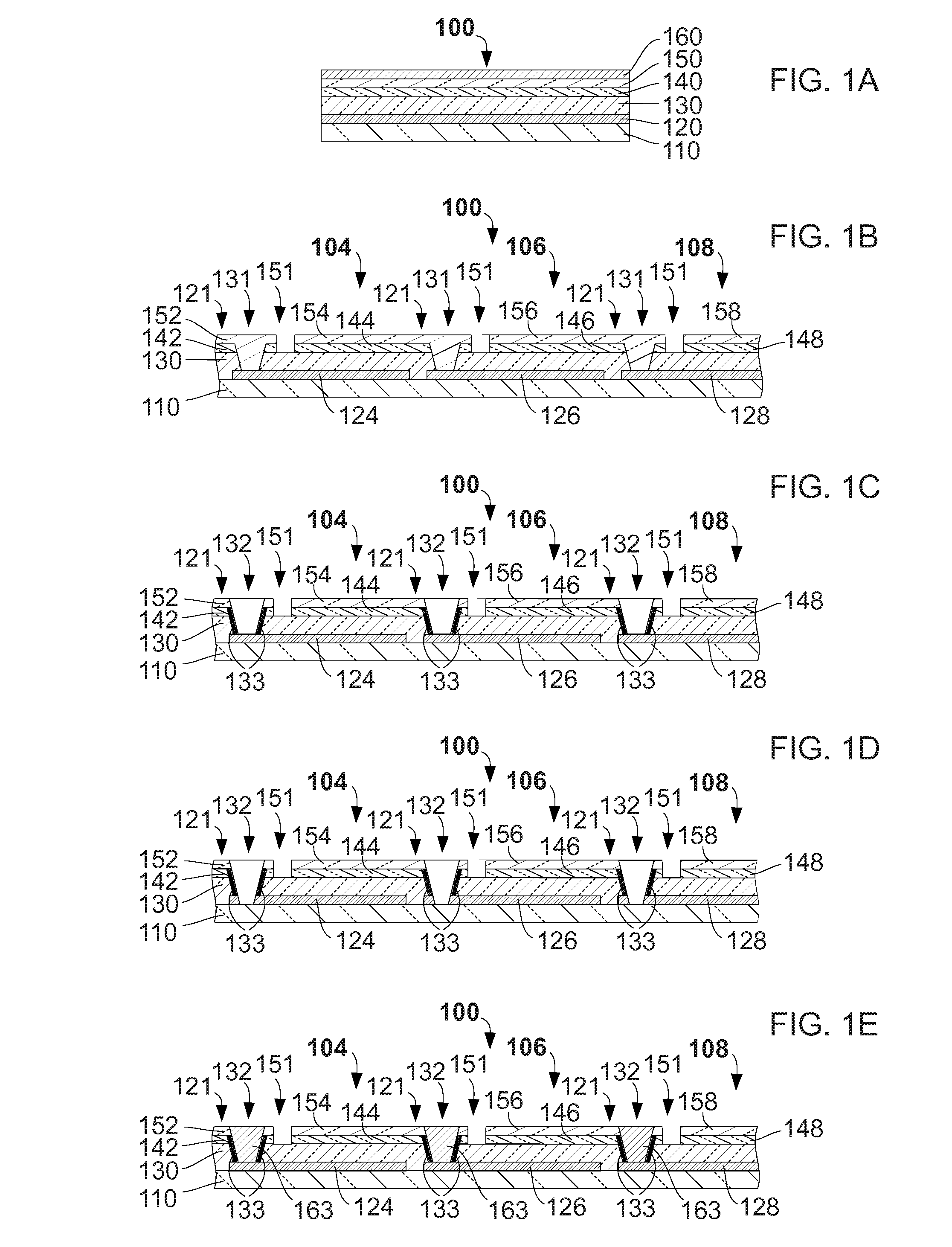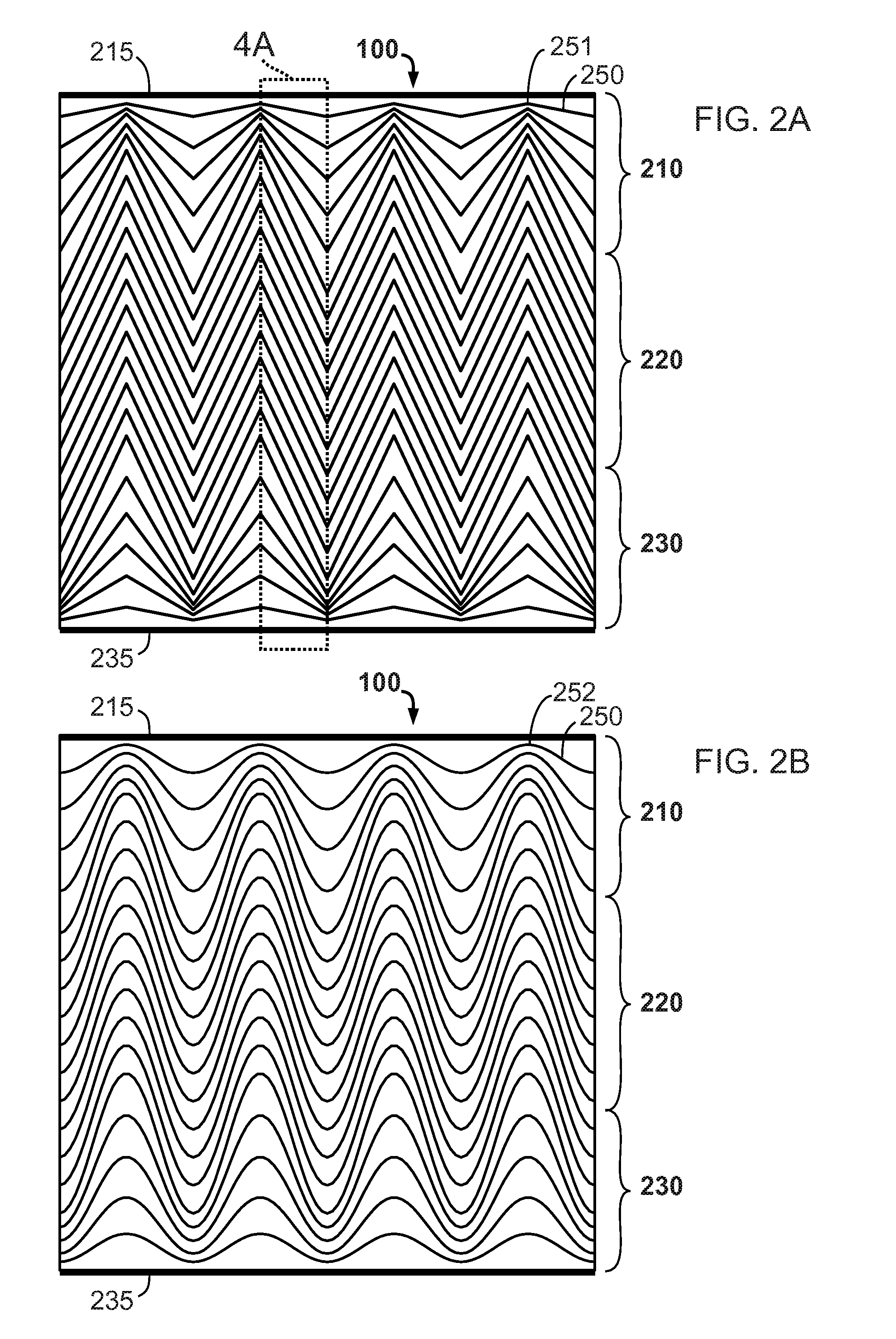Thin-film photovoltaic device with wavy monolithic interconnects
a monolithic interconnect and thin film technology, applied in the direction of computer-aided design, pv power plants, instruments, etc., can solve the problem of relatively high resistivity of the transparent front contact layer
- Summary
- Abstract
- Description
- Claims
- Application Information
AI Technical Summary
Benefits of technology
Problems solved by technology
Method used
Image
Examples
Embodiment Construction
[0050]FIG. 1A shows an embodiment of a thin-film photovoltaic cell 100. FIG. 1A is represented for explanatory purposes to clarify the layer structure of a typical photovoltaic cell. A sequence of material layers is deposited on a substrate 110. Substrate 110 may be rigid or flexible and be of a variety of materials or coated materials such as glass, coated metal, plastic-coated metal, plastic, or coated plastic such as metal-coated plastic. The inventive method as described is especially advantageous for flexible materials such as plastic, metal, or flexible glass. A preferred flexible substrate material is polyimide as it is very flexible, sustains temperatures required to manufacture high efficiency optoelectronic modules, requires less processing than metal substrates, and exhibits thermal expansion coefficients that are compatible with those of material layers deposited upon it. Industrially available polyimide substrates are ordinarily available in thicknesses ranging from 7 μ...
PUM
 Login to View More
Login to View More Abstract
Description
Claims
Application Information
 Login to View More
Login to View More - R&D
- Intellectual Property
- Life Sciences
- Materials
- Tech Scout
- Unparalleled Data Quality
- Higher Quality Content
- 60% Fewer Hallucinations
Browse by: Latest US Patents, China's latest patents, Technical Efficacy Thesaurus, Application Domain, Technology Topic, Popular Technical Reports.
© 2025 PatSnap. All rights reserved.Legal|Privacy policy|Modern Slavery Act Transparency Statement|Sitemap|About US| Contact US: help@patsnap.com



